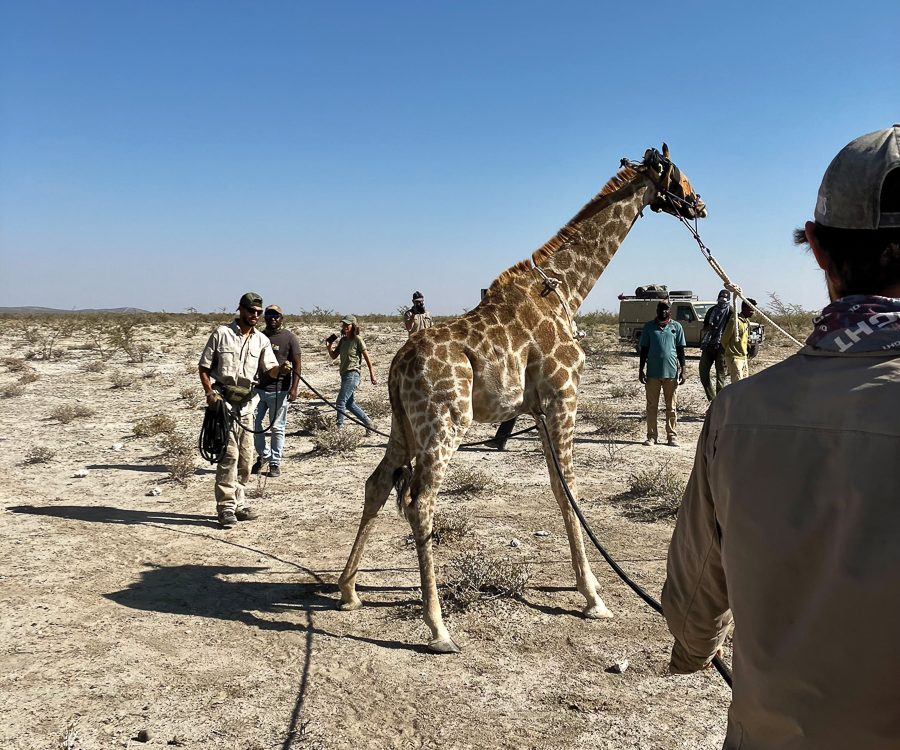EVENTS | January – February 2015
January 21, 2015Events | Expos, Trade Fairs & Agricultural Shows 2015
January 23, 2015Compiled Sanet van Zijl
Main photograph: Young Puff Adder ©Francois Theart, courtesy Snakes of Namibia Facebook page
Fourteen brave Namibians who share a love of snakes have dedicated themselves to protecting these creatures and preventing their demise.
T he reaction of most people when a snake crosses their path is to kill the animal outright; luckily a group of Namibians has decided to do all they can to change this outlook. They urge people to have the snakes relocated instead of ending their lives. The people in this group all reside in different areas of the country and each of them have had a love of snakes since childhood.
Generally it is assumed that all snakes are dangerous and that they will attack a human if they come in contact with one. The case is, however, that there are approximately 90 species of snake that can be found in Namibia and only 11 of these have a lethal bite. Two of these species are protected; they are the Dwarf Python and the Southern African Python. A non-venomous snake will only bite you for 3 reasons: 1) If you smell like food, for instance after handling warm-blooded animals such as mice or rats. 2) If the snake sees you as a predator that is trying to hurt it. 3) If the snake is afraid and has no escape route away from you.
A bite from the majority of Namibian venomous snakes is not immediately fatal. Most species are of little medical importance as they either rarely bite, or the bite can easily be treated, assuming the victim seeks medical help instantly. Namibia’s most venomous snakes are the Boomslang, Cape cobra, Black Mamba and Angolan cobra. How do you tell which snakes are venomous and which aren’t? There are a few ways: As a general rule, venomous snakes have diamond or triangle shaped heads, as opposed to rounded heads. Their eyes are also oval, instead of round. You cannot always look at the coloring or patterns on a snake’s skin, as some non-venomous snakes look very similar to venomous snakes. They have adapted in this way in order to survive.


According to the group of snake-catchers the main reason for people killing snakes is a lack of education on these animals and their behaviour. If anyone does encounter a snake in their area these people will gladly remove and relocate the animal to a place where it will be safe and away from humans.
Snake-catchers almost never handle snakes with their bare hands, instead snake hooks are used as this also protects the snake from being hurt. The most common snakes occurring in Windhoek are the Puff Adder, Brown house snake, Boomslang and Zebra Spitting Cobra. The most dangerous snake that sometimes occurs in town is the Black Mamba. When working with snakes one has to remember to stay calm and be careful. Snakes are unlikely to bite, unless they feel threatened. Snakes are more scared of us than we are of them.


Snakes are a very important part of the ecosystem and play an important role in the environment and therefore should not simply be killed out of fear. Snakes control the populations of pests in an area, such as rats and mice and they are also important for medical research and treatment of snakebites.
Francois Theart, one of the snake-catchers, residing in Windhoek, has been working with snakes since he was 13. Theart and Mike Bottger are responsible for snake problems in Windhoek. There are four snake-catchers situated at Otjiwarongo, they are Brendon Barnard, Bennie Hollander, Ethne Engelkind and Victor Shituleni. Barnard received his training from Theart. The most commonly occurring snake in that area is the Boomslang.

Westley Price is the go-to snake-catcher in Tsumeb. He caught his first snake at the tender age of 6. His interest in snakes was passed on to him via his grandfather. The most common snake in that area is the Anchieta’s Cobra, also known as the Angolan Cobra. This is however a dangerous snake and no attempt should be made to move this snake without professional help, as a bite could kill you within 6 to 8 hours.
The snake-catchers at the coast are father-son team, Simon and William McGowan. They are originally from the United Kingdom. Since moving to Namibia they have started working with snakes in order to prevent them from being killed.
Some other members of the team are Mario Guterres in Rehoboth, Curt-Ingo Sagell in Katima Mulilo, De Wet Horn in Grootfontein and Antoinette Heath covering both Karibib and Usakos areas.
If you encounter snakes in your area that you would like to have removed, please phone the following people:
Windhoek
Francois Theart 081 290 0343
Mike Bottger 081 129 7304
Otjiwarongo
Brendon Barnard 081 219 4873
Ethne Engelkind 085 297 7334
Bennie Hollander 081 628 4527
Victor Shituleni 081 272 0384
Tsumeb
Westley Price 081 128 3307
Rehoboth
Mario Guterres 085 288 8846
Grootfontein
De Wet Horn 085 634 4183
Katima Mulilo
Curt-Ingo Sagell 081 129 2811
Coast
Simon McGowan 081 233 9242
William McGowan 081 890 4841
Karibib/Usakos
Antoinette Heath 081 346 1107
In case of a snakebite, send an email to Dr Christo Buys at snakebitedoc@gmail.com, with the word “snakebite”.


